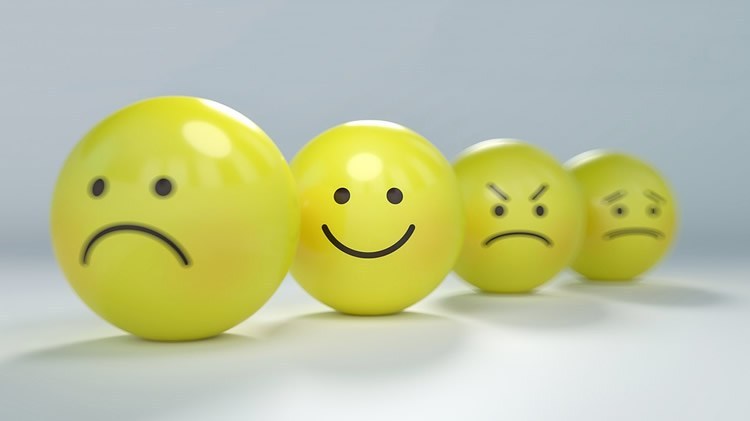by Phillip Stoller
What is Happiness?
Have you ever wondered what it is that truly makes one happy? If you have, you are among good company. The topic of happiness has been the focus of great thinkers throughout the ages. In the past it was a topic mused by philosophers. Today, it has become the domain of Psychologists and Life Coaches. The exciting news is that our understanding of this topic has advanced considerably.
Two Schools of Thought
In philosophy, there are two major schools of thought on happiness: the Hedonistic and the Eudaimonic. Hedonistic Philosophy asserts that happiness comes from a life spent maximizing pleasure while avoiding pain. It could be said, that this path towards happiness is the one that many have found themselves on without intention. At the surface level, the philosophy makes sense. As a species, we demonstrate high levels of motivation to pursue happiness according to the hedonistic paradigm, with many humans seeking pleasure and avoiding pain unconsciously. The trouble is, science has shown that our species’s unconscious approach does not work. For many, a life spent pursuing pleasure and avoiding pain often leads to a destructive cycle of brief moments of pleasure followed by deep feelings of emptiness. The emptiness often pushes us to pursue even greater pleasures; which in turn, intensifies the subsequent emptiness. This cycle can feel like trying to keep our fuel tank from going empty when there is a giant hole in the bottom of our tank.
Eudaimonic Philosophy asserts that happiness comes from living authentically and investing one’s life in the greater good. In this view, happiness comes from pursuing meaning and fulfilling our potential through living out values such as kindness, justice, honesty and courage. While hedonists avoid difficult or painful experiences, the Eudaimonic Path does not. This belief embraces the fact that some of the most difficult experiences in life often lead to greater understanding, meaning, and purpose which subsequently create deeper levels of joy and contentment. Happiness is not found in avoiding hard times; rather it is a part of being able to respond to good times as well as adversity in a way that allows us to grow from each experience in a meaningful way.
The Science of happiness
In modern times, happiness has become the domain of an emerging field of science: Positive Psychology. Positive Psychology – the study of what makes us emotionally well – could be seen as an appropriate response to Psychology’s disproportionate historical focus on what makes us unwell (Clinical Psychology). In the world of Positive Psychology, happiness is often referred to under the broader label of Well-Being. Science’s understanding of Well-Being has been advanced by many, and there are several good models of Well-Being that have strong empirical backgrounds. In other words, they have been proven to be connected to our happiness through rigorous peer reviewed testing. One of my favorite is a model from Carol Ryff which sees 6 Dimensions of Well-Being. Those dimension are:
1) Self-Acceptance
High Self Acceptance: You possess a positive attitude toward yourself; acknowledge and accept multiple aspects of yourself including both good and bad qualities; and feel positive about your past life.
Low Self Acceptance: You feel dissatisfied with yourself; are disappointed with what has occurred in your past life; are troubled about certain personal qualities; and wish to be different than what you are.
2) Personal Growth
Strong Personal Growth: You have a feeling of continued development; see yourself as growing and expanding; are open to new experiences; have the sense of realizing your potential; see improvement in yourself and behavior over time; are changing in ways that reflect more self-knowledge and effectiveness.
Weak Personal Growth: You have a sense of personal stagnation; lack the sense of improvement or expansion over time; feel bored and uninterested with life; and feel unable to develop new attitudes or behaviors.
3) Purpose in Life
Strong Purpose in Life: You have goals in life and a sense of directedness; feel there is meaning to your present and past life; hold beliefs that give life purpose; and have aims and objectives for living.
Weak Purpose in Life: You lack a sense of meaning in life; have few goals or aims, lack a sense of direction; do not see purpose of your past life; and have no outlook or beliefs that give life meaning.
4) Positive Relations With Others
Strong Positive Relations: You have warm, satisfying, trusting relationships with others; are concerned about the welfare of others; are capable of strong empathy, affection, and intimacy; and understand the give and take of human relationships.
Weak Relations: You have few close, trusting relationships with others; find it difficult to be warm, open, and concerned about others; are isolated and frustrated in interpersonal relationships; and are not willing to make compromises to sustain important ties with others.
5) Environmental Mastery
High Environmental Mastery: You have a sense of mastery and competence in managing the environment; control complex array of external activities; make effective use of surrounding opportunities; and are able to choose or create contexts suitable to your personal needs and values.
Low Environmental Mastery: You have difficulty managing everyday affairs; feel unable to change or improve surrounding contexts; are unaware of surrounding opportunities; and lack a sense of control over the external world.
6) Autonomy
High Autonomy: You are self-determining and independent; are able to resist social pressures to think and act in certain ways; regulate behavior from within; and evaluate yourself by personal standards.
Low Autonomy: You are concerned about the expectations and evaluations of others; rely on judgments of others to make important decisions; and conform to social pressures to think and act in certain ways.
A Path Towards Happiness
Ryff’s model can be used to chart a path towards a happier life. One can use these dimensions to go beyond an ambiguous sense of of unhappiness and begin to diagnose the possible roots of those feelings. This introspection can lead to actionable insights about how one might change their life in a manner that is scientifically connected to greater happiness. Alternatively, one could explore these dimensions with a life-coach and set goals aimed at improving well-being informed by Ryff’s model.
Questions to consider:
- How do you stand on each of these dimension?
- What dimensions do you see as strengths that are contributing to your well-being
- What dimensions do you see as areas of improvements?
- What could you do to leverage the dimensions where you are already strong?
- How could your life/beliefs be different in the dimension which are taking away from your well being?

